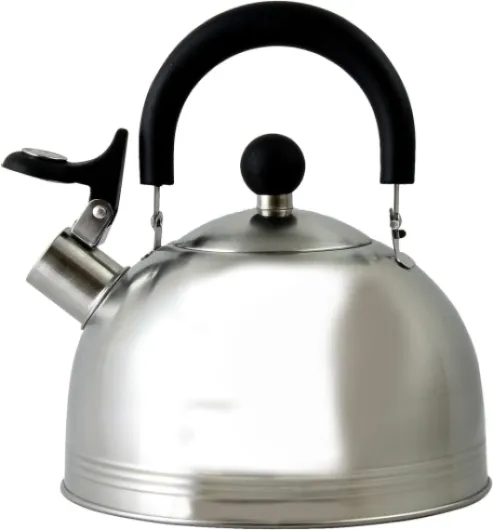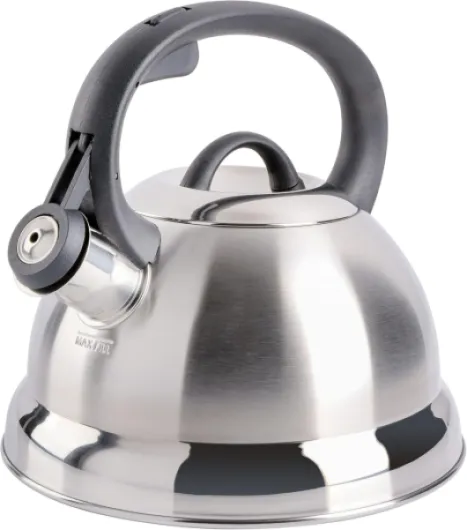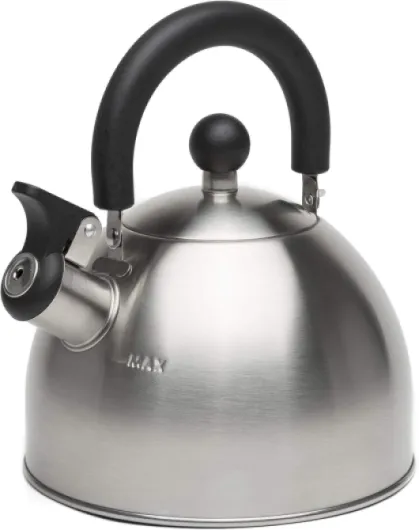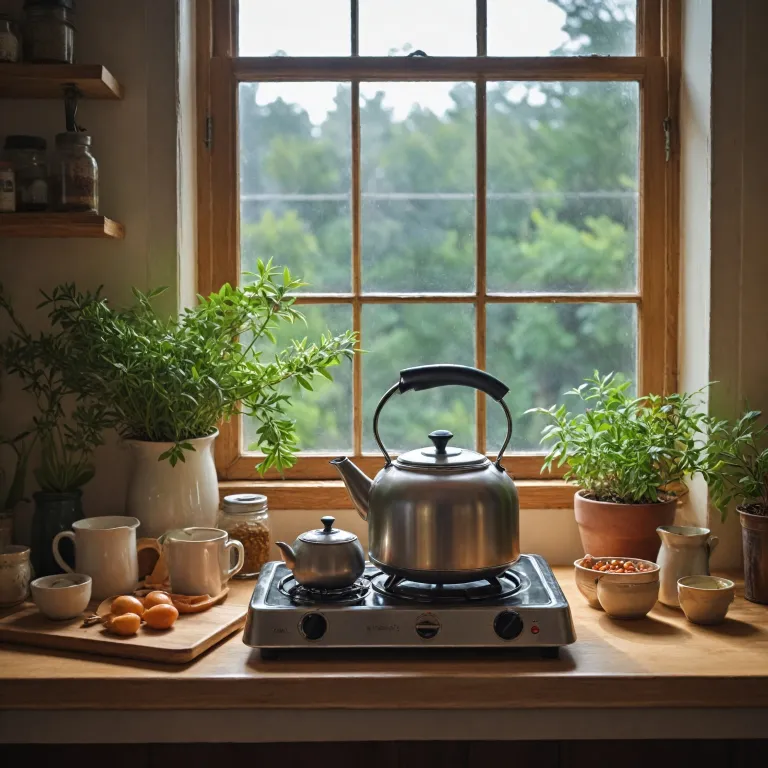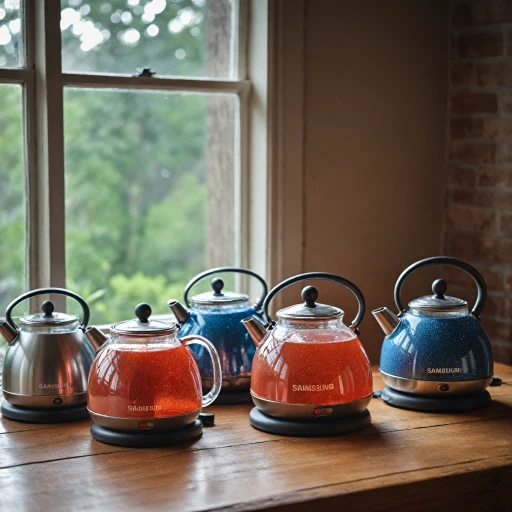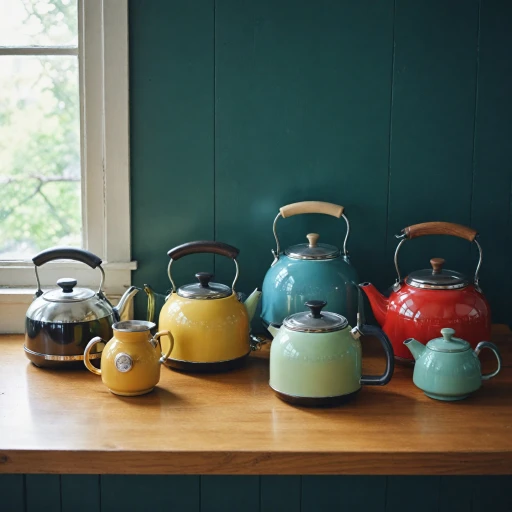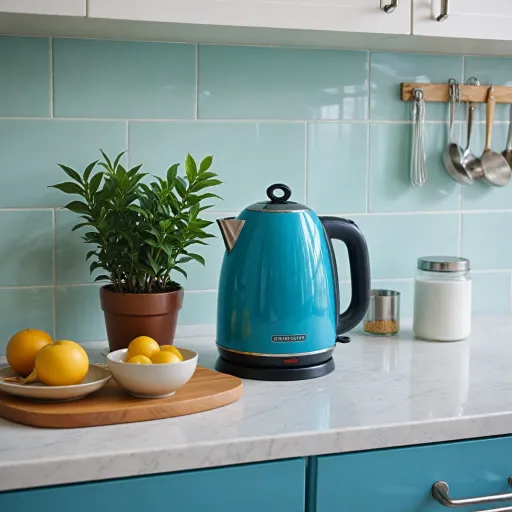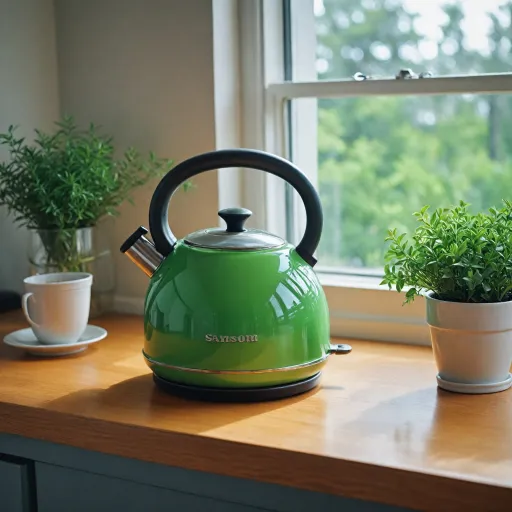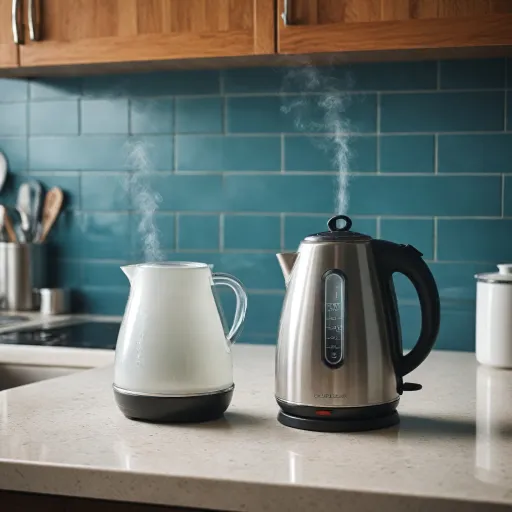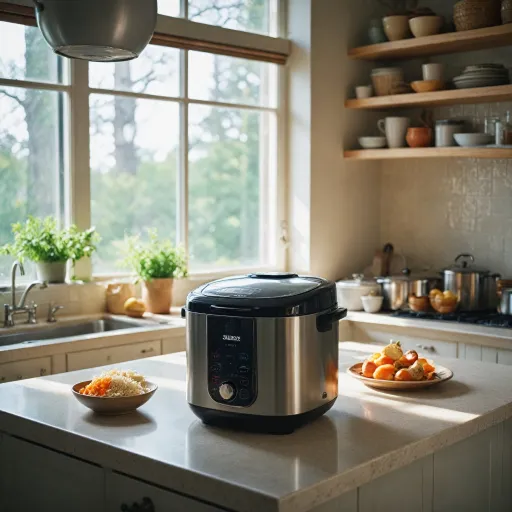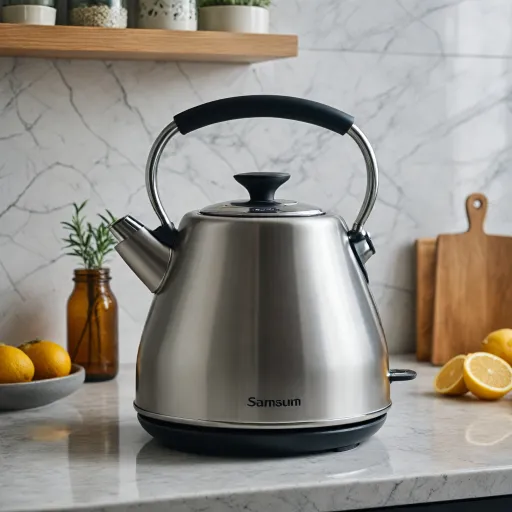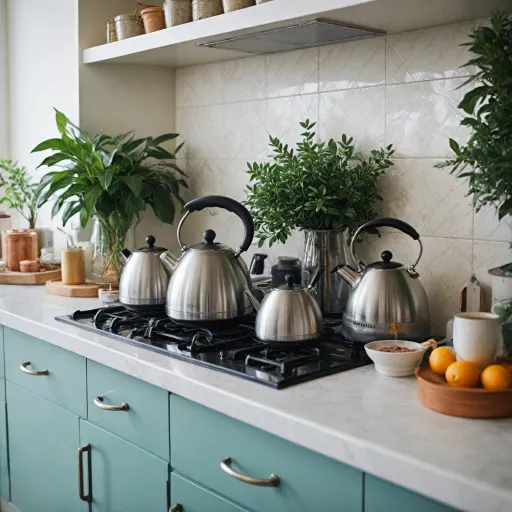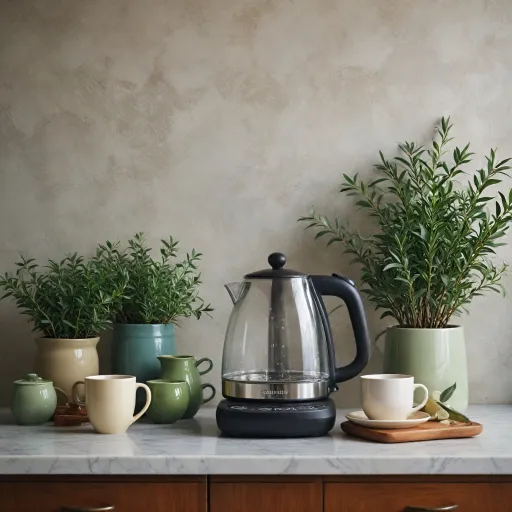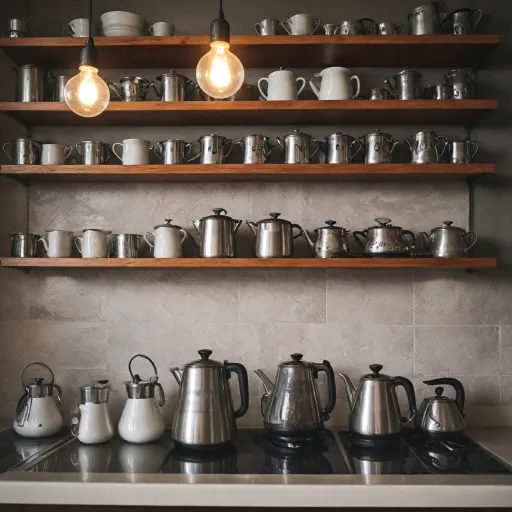
Understanding the stovetop kettle
What Makes a Stovetop Kettle Unique?
The stovetop kettle is a classic kitchen tool, known for its simplicity and reliability. Unlike an electric kettle, which plugs into a wall and heats water with an internal element, a stovetop kettle sits directly on your stove top—whether gas or electric. This means you can use it almost anywhere, from a modern kitchen to a rustic cabin, as long as you have a heat source. The iconic whistling tea kettle sound signals when your water is boiling, making it both functional and nostalgic.
Why Choose a Stovetop Kettle for Tea and More?
Many tea enthusiasts prefer the stovetop kettle for its ability to reach a rolling boil, which is essential for brewing certain types of tea. Stainless steel and steel models are especially popular for their durability and even heat distribution. You’ll find a wide range of options on Amazon, from the best-rated whistling kettle to gooseneck kettle designs that offer precise pour control. The price can vary depending on the quart capacity, material, and features like heat-resistant handles or dry protection.
Everyday Versatility and Reliability
Stovetop kettles aren’t just for tea. They’re perfect for making hot water for coffee, instant meals, or even sterilizing utensils. Unlike some electric kettles, there’s no auto shut or boil dry protection, so you need to keep an eye on your kettle as it heats. However, this hands-on approach is part of the appeal for many users who appreciate the tactile experience of filling, pouring, and listening for the whistle.
Looking for a Greener Option?
If you’re interested in how your choice of kettle impacts the environment, you might want to explore the benefits of a green electric tea kettle. While stovetop kettles have their charm, electric models are evolving with energy-saving features and eco-friendly materials.
As you consider which kettle fits your needs, keep in mind the features, safety tips, and maintenance routines that can make your stovetop kettle a long-lasting kitchen companion.
Comparing stovetop and electric kettles
How Electric and Stovetop Kettles Differ in Daily Use
When deciding between a stovetop kettle and an electric kettle, it’s important to consider how each fits into your kitchen routine. Both options are designed to boil water efficiently, but their features, convenience, and performance can vary quite a bit.
- Speed and Efficiency: Electric kettles are generally faster at boiling water, often taking just a few minutes. Stovetop kettles, especially those made from stainless steel, may take a bit longer, depending on your stove type (gas or electric).
- Control and Versatility: With a stovetop kettle, you have more control over the heat source. Some tea enthusiasts prefer this for brewing delicate teas. Electric kettles, especially those with temperature controls, can also offer precision, but not all models include this feature.
- Safety Features: Electric kettles often come with auto shut-off and boil dry protection, making them safer if you tend to multitask. Stovetop kettles rely on a whistling feature to alert you when the water is boiling, but require you to manually remove them from the heat.
- Design and Aesthetics: Stovetop kettles, like classic whistling tea kettles, add a timeless look to your kitchen. Electric kettles are available in a range of modern designs, including gooseneck kettles for precise pouring.
- Capacity and Materials: Both types come in various sizes, from compact 1-quart models to larger options. Stainless steel is a popular choice for durability and easy cleaning, whether you’re looking at a stovetop or electric water kettle.
- Price and Value: On platforms like Amazon, you’ll find a wide range of prices for both stovetop and electric kettles. User reviews and star ratings can help you identify the best value for your needs.
For a deeper dive into the world of electric kettles, including detailed product comparisons and tested recommendations, check out this comprehensive guide to electric kettles.
Ultimately, your choice between a stovetop kettle and an electric kettle will depend on your priorities—whether it’s speed, style, safety, or the ritual of making tea. Both have their place in the kitchen, and understanding their differences can help you find the best fit for your daily routine.
Key features to look for in a stovetop kettle
What to Look for When Choosing Your Next Kettle
When searching for the best stovetop kettle, it’s easy to get overwhelmed by the options. Whether you’re a tea lover, a coffee enthusiast, or just want a reliable way to boil water, knowing what features matter can help you make a smart choice. Here’s what to consider before you buy:
- Material Matters: Stainless steel is a top pick for durability and heat retention. Some kettles also use glass or enamel, but stainless steel kettles are often praised for their longevity and easy cleaning. Look for food-grade steel to avoid unwanted flavors in your hot water.
- Capacity: Most stovetop kettles range from 1 to 3 quarts. If you regularly make tea for a crowd, a larger water kettle makes sense. For solo use, a smaller size is easier to handle and store.
- Whistling Feature: A classic whistling tea kettle signals when your water is ready, preventing accidental boil dry situations. This is especially handy if you multitask in the kitchen.
- Handle Comfort and Safety: A heat-resistant handle is crucial. Silicone or insulated handles protect your hands when pouring boiling water. Some models also have ergonomic designs for a better grip.
- Pouring Spout: A gooseneck kettle offers precise pouring, perfect for pour-over coffee or delicate tea. Standard spouts are fine for general use, but if you value control, gooseneck is worth considering.
- Compatibility: Not all stovetop kettles work on every stove. Check if the kettle is suitable for gas, electric, or induction cooktops. This ensures you get the most out of your purchase.
- Safety Features: While stovetop kettles don’t have auto shut off like an electric kettle, some models include dry protection or a tight-fitting lid to reduce spills. For those who prioritize safety, electric kettles with auto shut off might be worth exploring.
- Ease of Cleaning: Wide openings make it easier to fill and clean your kettle. Removable lids and simple designs help prevent mineral buildup, especially if you use your kettle daily.
- Price and Reviews: Check the stars and reviews on sites like Amazon to see how kettles perform in real kitchens. Sometimes, the best value isn’t the cheapest, but the one that lasts and performs well.
Choosing the right stovetop kettle is about balancing your needs, kitchen style, and budget. Whether you’re after a classic whistling kettle or a modern stainless steel model, focusing on these features will help you find a reliable kitchen companion for years to come.
Safety tips for using a stovetop kettle
Practical Ways to Stay Safe with Your Kettle
Using a stovetop kettle is simple, but safety should always come first. Whether you’re boiling water for tea or coffee, a few mindful steps can help you avoid common hazards. Here are some practical tips to keep in mind when using your whistling kettle or any other stovetop kettles:
- Never overfill your kettle. Most stainless steel or steel kettles have a maximum fill line. Overfilling can cause boiling water to spill out when it starts to boil, which is dangerous and messy.
- Always use the handle. Handles are designed to stay cool, but they can get hot if left on the stove for too long. Use a dry towel or oven mitt if the handle feels warm.
- Keep an eye on the kettle. Unlike electric kettles with auto shut-off, stovetop models rely on you to turn off the heat. The whistling feature is a classic alert, but don’t leave the kitchen while waiting for your water to boil.
- Boil dry protection matters. Boiling a kettle dry can damage the material and even cause a fire hazard. Make sure there’s always enough water before placing your kettle on the stove top or gas electric burner.
- Use the right burner size. Match the base of your kettle to the burner. A burner that’s too large can overheat the sides and handle, while a small one may not heat efficiently.
- Pour carefully. When your water boiler is ready, tilt the kettle slowly to avoid splashing hot water. Gooseneck kettles offer more control for pouring, especially when making specialty tea or coffee.
Extra Tips for Everyday Use
- Check the spout and lid for steam leaks before each use. A tight seal ensures the best whistling and prevents accidental burns.
- Choose a model with a sturdy, heat-resistant handle for extra safety, especially if you’re using a quart or larger capacity kettle.
- Read product reviews on sites like Amazon and look for high stars and tested safety features, such as dry protection or shut boil mechanisms.
By following these steps, you can enjoy hot water for your favorite tea or coffee with peace of mind. Whether you’re using a classic whistling tea kettle or a modern stainless steel water kettle, safety is always worth the extra attention.
Cleaning and maintaining your stovetop kettle
Simple Steps for a Spotless Kettle
Keeping your stovetop kettle clean isn’t just about looks—it helps maintain the best taste in your tea and extends the life of your kettle. Whether you use a stainless steel, whistling, or gooseneck kettle, regular cleaning is key. Here’s a straightforward approach:
- Empty after each use: Don’t leave hot water sitting in your kettle. Pour out any leftover water to prevent mineral buildup.
- Rinse and dry: After boiling water, rinse the inside with warm water and dry thoroughly. This helps avoid water spots, especially on stainless steel kettles.
- Deep clean monthly: Fill your kettle with equal parts water and white vinegar, bring it to a boil, and let it sit for 15-20 minutes. Pour out the solution, scrub gently with a soft brush, and rinse well. This removes limescale and keeps your water tasting fresh.
- Don’t forget the spout and lid: Mineral deposits can build up in the spout and under the lid. Use a small brush or cloth to clean these areas.
- Check the exterior: For a polished look, wipe the outside with a damp cloth. Avoid abrasive cleaners that can scratch steel or enamel finishes.
Preventing Damage and Ensuring Longevity
Stovetop kettles are built to last, but a few habits can help you avoid common issues:
- Never boil dry: Boiling your kettle without water can warp the base or damage the handle. Some electric kettles have auto shut or boil dry protection, but stovetop models rely on your attention.
- Use the right burner size: On gas or electric stoves, match the burner to the base of your kettle. This prevents overheating and keeps the handle cool.
- Don’t overfill: Only fill to the recommended level. Overfilling can cause hot water to spill when boiling, especially in whistling tea kettles.
What to Avoid for Safe Use
- No harsh chemicals: Stick to mild soap or vinegar. Strong chemicals can damage the interior and affect the taste of your tea.
- Don’t submerge: Avoid soaking the entire kettle, especially if it has a wooden or heat-resistant handle.
- Inspect regularly: Check for rust, loose handles, or worn seals. Quality stovetop kettles, especially those with high amazon stars, are built to last but still need occasional attention.
With these habits, your stovetop kettle will stay in top shape, ready for your next cup of tea or any creative use you have in mind. Whether you’re comparing the price and features of the best water boiler or simply enjoying the classic whistling sound, a well-maintained kettle is a reliable kitchen companion.
Creative uses for your stovetop kettle
Beyond Boiling: Surprising Ways to Use Your Stovetop Kettle
Most people think of a stovetop kettle as just a tool for boiling water, but it’s actually a versatile kitchen companion. Whether you have a classic whistling kettle or a modern stainless steel model, there are creative uses that go far beyond making tea.
- Making Pour-Over Coffee: A gooseneck kettle gives you precise control when pouring hot water over coffee grounds. This method is favored by coffee enthusiasts for its ability to extract rich flavors. Even a regular stovetop kettle can do the job if you pour slowly and carefully.
- Prepping Instant Meals: Need hot water for instant noodles, oatmeal, or soup? A stovetop kettle heats water quickly and efficiently, making it easy to prepare quick meals without using a microwave or electric water boiler.
- Sanitizing Kitchen Tools: Boiling water in your kettle can help sanitize utensils, baby bottles, or even cutting boards. Just pour the boiling water over the items for an extra layer of cleanliness.
- Humidifying the Air: In dry months, you can fill your kettle and let it gently steam on the stove. This adds moisture to the air, which can be especially helpful in winter.
- Melting Chocolate or Butter: Place a heatproof bowl over the steam from your boiling kettle to gently melt chocolate or butter for baking. It’s a simple double-boiler technique that works with most stovetop kettles.
Tips for Getting the Most from Your Kettle
To make the most of your stovetop kettle, always check the fill line and never let it boil dry. Many whistling tea kettles offer dry protection features, but it’s still best to monitor the water level. Stainless steel and steel kettles are durable, but regular cleaning helps maintain their shine and prevents mineral buildup. If you’re looking for the best price or top-rated models, checking reviews and stars on sites like Amazon can help you find a kettle that suits your needs, whether you want a 2 quart, 3 quart, or larger size.
Stovetop kettles work on gas, electric, and even induction stovetops, making them a flexible choice for any kitchen. While electric kettles offer auto shut and boil dry protection, stovetop models give you the classic whistling sound and a hands-on experience. With a little creativity, your kettle can become one of the most useful tools in your kitchen.
